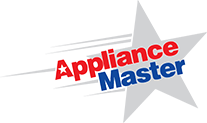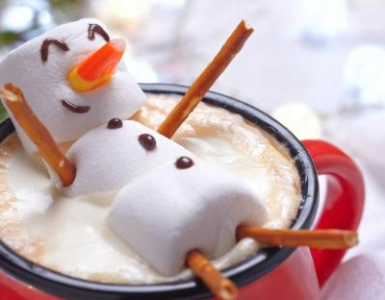A Guide To Cleaning Your Kitchen Appliances
Your kitchen appliances work hard to keep your culinary adventures running smoothly. Show them some love by following these cleaning tips:
Stove and Oven

Clean cooking residues and grease from your stove and oven surfaces using a non-abrasive appliance cleaner. Regular maintenance ensures even cooking, prevents flare-ups, and enhances safety.
Remember to remove oven racks before self-cleaning to prevent discoloration. Clean them separately using an abrasive pad or chemical oven cleaner.
For electric ovens, use the middle rack for best results. Broil on the top rack, and bake on the lower rack (which will be cooler). To help keep your oven clean try using an oven liner.
Gas ovens can have uneven temperatures due to vented heated air. Place a pizza stone on the bottom rack to stabilize the temperature.

// non-abrasive appliance cleaner // abrasive pad //
// oven cleaner // oven liner // pizza stone //
Cooktop Burners

Use the right size burner for your pot to ensure even cooking.
Remove knobs and wash them in warm soapy water or your dishwasher. For stubborn grime, soak them.
Avoid covering electric cooktop drip pans with foil, as it can contact the burner coil.

// Drip Pans //

1. Gas Ranges
- Instant temperature control on the cooktop due to gas burners.
- Typically more expensive upfront but cost less to operate over time.
- Ideal for professional-grade cooking and precision.
2. Electric Ranges
- Common where gas isn’t readily available.
- Smooth cooktops are easiest to clean, but their surfaces are more delicate and you may need new cookware with heavy flat bottoms.
- Even heating in the oven. Use high quality baking pans for consistent results.
3. Dual Fuel Ranges
- The best of both worlds! Dual fuel ranges combine gas cooktops with electric ovens.
- Gas cooktops for precise cooking, and electric ovens for even baking.
- Perfect for serious home cooks who want versatility.
Remember, a clean kitchen isn’t just about aesthetics—it’s essential for health, hygiene, and the longevity of your appliances. Happy cooking!

// cookware // baking pans //

1. Check The Basics:
- Ensure the range is properly plugged in or connected to the gas supply.
- Verify that the circuit breaker or fuse for the range is not tripped.
2. Temperature Issues:
- If the oven temperature seems off, use an oven thermometer to compare the actual temperature with the set temperature.
- Calibrate the oven if necessary (consult the user manual).
3. Burner Problems:
- If a burner isn’t heating, check if it’s properly seated in the socket.
- Clean burner coils and drip pans to improve performance.
4. Strange Odors or Smoke:
- Turn off the range immediately if you smell gas. Open windows and doors.
- For smoke or burning smells, check for spills or debris in the oven.
5. Error Codes:
- Note any error codes displayed on the control panel.
- Call Appliance Master to schedule an appointment with one of our trained technicians.
6.Professional Help:
- If issues persist, the professionals at Appliance Master can fix your appliance so you can get back to enjoying your life. Schedule an appointment today.
Remember, safety first! If you suspect a gas leak or electrical issue, seek professional assistance promptly. Protect your family and home by having working smoke and carbon monoxide detectors properly installed.

// oven thermometer // smoke & carbon monoxide detectors //









Add comment